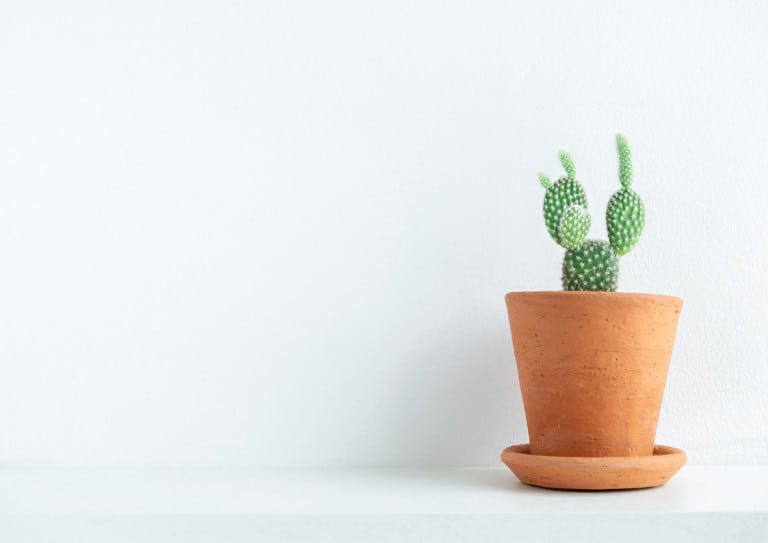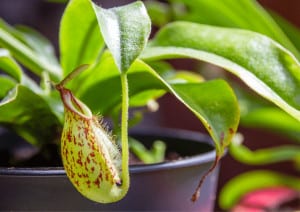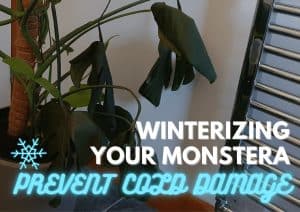Drainage Holes in Terracotta Pots: Necessary or Not?
- Lakeisha Ethans
- March 5, 2022
If you buy something using the retail links in our articles, sometimes we earn a small affiliate commission. This does not impact the products we recommend.
Most plant pots come with drainage holes. As their name suggests, these holes exist to allow the soil to drain itself of excess water. They’re considered a necessity for most, as they reduce the risk of root rot by preventing pooled puddles of water and salt.
But are drainage holes absolutely necessary for all pots? After all, some vessels are made of more porous materials – including the ceramic terracotta.
Whilst the porous nature of unglazed terracotta pots means that soil will dry out faster than plastic plant pots which lack drainage holes, typically the evaporation of water through pot walls will be too slow to prevent the risk of pooled water denying roots of oxygen and introducing the risk of root rot.
There’s quite a bit of discourse within the horticultural community about the true necessity of drainage holes. Experts and enthusiasts alike are divided as to the absolute best choice, especially for indoor plants. Many indoor plant-owners however don’t want to deal with the mess that comes with drainage holes leaking, as this can damage furniture, floors and drapery.
What’s the right answer? Which option – drainage hole or none – is best for you? To help lay out the case for and against we’ll be answering the following questions:
- Why are drainage holes important?
- Is it safe for plants to not have drainage holes?
- Do terracotta pots need drainage holes?
- How do you use pots without drainage holes without damaging plants?

Why are drainage holes in plant pots important?
Plants need water to grow, but for the most part, their roots don’t enjoy sitting in pools of water for prolonged periods of time. Water buildup in the soil causes air pockets in that soil to get closed up, which prevents roots from being able to breathe properly. Carbon dioxide and oxygen can’t be exchanged if the soil is entirely clumped by water.
Waterlogged soil poses a huge risk of root rot, which is one of the primary killers of household plants. Beginner plant-owners often overwater their flora, and if there’s no drainage hole, the water has nowhere to go. For that reason, most first-time growers will find the most success with pots that have holes.
Another reason drainage holes are important is because of potential salt buildup. Lots of fertilizers have salts in them, as does most tap water. When you use these products on your plants, some of the salt stays in the soil, and they concentrate and form blockages over time that create imbalance environments. Drainage holes allow the salts to be flushed.

Is it safe for plants if no drainage holes are present?
Drainage holes are important to plants, as they prevent root rot from water and salt buildup. A lack of these holes can pose a significant risk, especially to plants that need environments with low moisture.
Experienced and cautious plant-owners can likely find a safe way to use pots without holes. Watering only the exact amount needed and keeping an eye on a plant’s condition can allow for plants to be kept in pots without drainage holes.
If you’re worried about overwatering and haven’t yet developed confidence for gauging your plant’s specific moisture needs, it’s likely safest for your plants that you use pots with drainage holes.
Do terracotta pots need drainage holes?
Terracotta is a material made from a clay-based earthenware substrate with a porous body. This porous state is primarily what might make you wonder if pots made from this material need drainage holes.
Terracotta pots will indeed be able to dry soil more quickly than more non-porous materials. This is why, when they don’t have holes, these pots can serve as a useful middle-ground for indoor plant-owners who want to avoid water leaking in their homes.
This can also be good for those with less time. A lack of drainage holes reduces the required frequency of watering, giving plants more time to absorb the available moisture. If you want to just water your plants once a week at most, hole-less pots may be ideal.
But, at the same time, the balance is delicate. The porous nature of terracotta is not sufficient to completely protect plants from root rot. You need to be able to give your plants the right amount of water mindfully to fully ensure their safety.
Because of the high risk of root rot, overwatering, and salt build-up – it’s still considered safest to use terracotta pots with drainage holes. Regardless, you’re welcome to attempt to use pots without them, and with care, you may be able to make it work!

How do you use terracotta pots without drainage holes?
To safely use terracotta pots that don’t have drainage holes, you’ll need to take a few extra steps:
Firstly, when potting your plant, create a special extra layer called a drainage layer. This layer will take the place of a drainage hole. This is done by adding larger mediums like pumice, pebbles, stone, or others to the base of a pot before pouring in soil. The bigger items will give water enough space to pass through to the base of the pot, preventing waterlogged soil.
Next, use the right pot size. Too large a pot means more soil, which means more moisture and soggier soil that can cause root rot. Don’t use pots that are over 1 or 2 inches in diameter bigger than necessary.
You should also use the right kind of soil for your plant. Different plants have different drainage needs, so research your plants before deciding on the soil. Each soil type may absorb more or less water, so choose wisely.
Finally, be very careful with your watering habits. Pots with drainage holes allow you to fully saturate a plant’s soil with water, but you can’t do that with pots that don’t have holes. Use only a little bit of water and pour it in slowly so that water has the time to evenly spread across soil without forming puddles.
This also requires ensuring that your pots are not rained on. Keep them sheltered if they’re outdoors or simply leave them indoors for best results. If you ever think that you may have over-watered your plant, use your hands to hold the soil in place and tip your pots to spill the extra water back out.
Some more experienced plant-owners will be able to use terracotta pots without drainage holes without taking all these extra steps. Instead, they’ll focus only on careful watering. If you know your plant’s water needs well and can monitor it for any warning signs of waterlogged soil, you can opt for this method instead.
Take home message
It’s always best to use pots with drainage holes, even with porous pot materials like terracotta. This is important to keeping plants safe, reducing the risk of root rot from soil that is too waterlogged or concentrated with salt.
If you’re going to use a terracotta pot without drainage holes, make sure you know what you’re doing! Water sparingly, use a drainage layer with larger mediums, choose the right soil, and use pots of the right size. If all else fails and you think you’ve made a mistake, report your plant and try again!

Lakeisha Ethans
Houseplant Writer
Mother to two humans and hundreds of plant babies. Lakeisha uses her 15 years of experience as a content writer to specialise in simplifying what you need to know to grow and care for all indoor plants.
Similar Posts
How Long Does It Take Nepenthes To Grow Pitchers?
Nepenthes plants or pitcher plants are renowned for their carnivorous pitchers. When can you expect these pitchers to finally grow?
Winterizing Your Monstera: Protecting Your Plant from Cold Damage
Monstera kept in chilly climates are susceptible to cold damage if not protected from the deep freeze. Here's some tips to winterize your precious fenestrated foliage.



